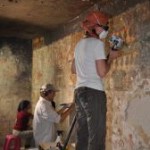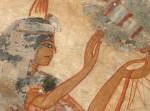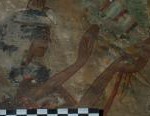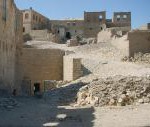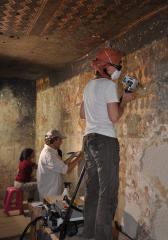
Forntida väggmålningar
Laserljus demaskerar gamla egyptiska väggmålningar
Nära Konungarnas dal i Egypten, vid graven av Neferhotep, en högt uppsatt tjänsteman och högskrivare, svärtade tusentals år av sot och föroreningar väggmålningarna, hieroglyferna och relieferna på denna plats till oigenkännlighet. Att demaskera dessa kulturellt betydelsefulla konstverk är en mödosam process. Även handrengöring kan visa sig olämplig på grund av den ömtåliga väggytan. Detta arbete kräver en mycket skicklig och kunnig konservator. De måste vara extremt försiktiga för att ta bort smuts som byggts upp under årtusenden samtidigt som de bevarar den känsliga underliggande färgen och kalkstensytan.
I ett projekt som stöds av Gerda Henkel Foundation testade tre konservatorer från Köln, Susanne Brinkmann, Birte Graue och Christina Verbeek, olika metoder för att rengöra dessa utmanande ytor. Deras arbete gjordes i samarbete med andra konservatorer, vetenskapsmän och egyptologer. Resultatet – de väljer den senaste tekniken för att bevara konstverket i denna antika grav.
Här var det för första gången någonsin tillåtet att använda laserrengöring av Egyptens högsta råd för antikviteter. Laserrengöring är en beröringsfri mediafri process som har visat sig särskilt framgångsrik för att ta bort fast smuts och sot från ömtåliga ytor. Dessa unika egenskaper gjorde det möjligt för konservatorsteamet att prova rengöringsmetoden med hjälp av ett bärbart handhållet lasersystem.
Nu, efter mer än 3000 år, kan de utsmyckade väggmålningarna i denna antika grav ses igen tack vare skickliga konservatorer och cleanLASER-teknik, Neferhoteps begravningsplats är den största privata graven i Theban Necropolis, som består av cirka 800 gravar av magistrater och präster.
Mer information och video om detta projekt finns här.

